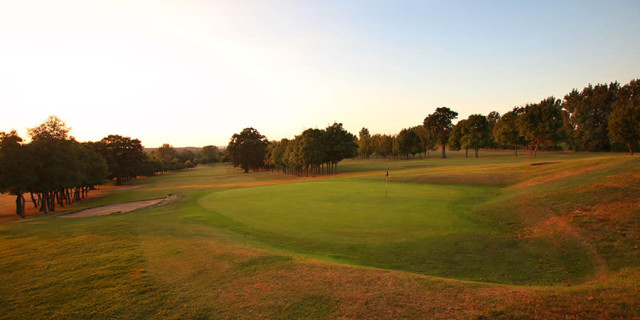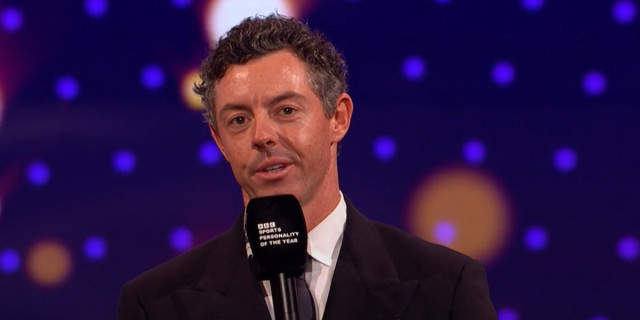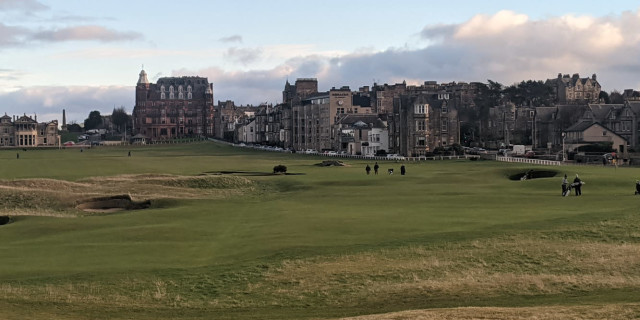
Remembering Golf's Gentleman Champion Peter Thomson
Golf is mourning the loss of Peter Thomson, the legendary Australian who passed away on Wednesday in Melbourne at the age of 88. Five-times Champion Golfer of the Year, his remarkable achievements in The Open will forever be a touchstone of success and consistency within the game’s oldest major championship, but those incredible triumphs stand as just an introduction to the enduring legacy and impact of Golf’s Gentleman Champion.
Born in Brunswick, a suburb of Melbourne, in 1929, the young Peter Thomson was enraptured by cricket, before falling for the charms of golf at Royal Park, a nine-hole course that uniquely has both a tram and railway line running through it. Not to mention fences to keep sheep off the greens. The precocious teenager became club champion at the age of 16, and within a decade he would become a three-time Open champion, after honing his skills on the Victoria Golf Club on the Sandbelt.
Taken under the wings of Norman Von Nida – an exceptionally prolific golfer who remains criminally underrecognised by the World Golf Hall of Fame – Peter Thomson made his debut in the Open Championship in 1951 at Royal Portrush in Northern Ireland. The young man finished in a tie for sixth, considerably behind the dominant performance of England’s Max Faulkner, but it was an early indicator of the spectacular record that “Thommo” would etch during the 50s.
Following runner-up finishes in 1952 and 1953 – standing joint closest to Ben Hogan in his solitary foray to the Championship – the Australian and New Zealand Open champion secured the Claret Jug at Royal Birkdale in 1954, one-stroke clear of the great Bobby Locke, Dai Rees and Syd Scott. Contrary to the common viewpoint that top American players were exclusively absent from The Open throughout this time, three-time Masters winner Jimmy Demaret was in a tie for tenth, six back of Thomson.
A legend and true gentleman of the game ???????? pic.twitter.com/vdjllNxC34
— The Open (@TheOpen) June 20, 2018
This began an extraordinary sequence of victories in the Championship. Successfully defending the title at the Old Course at St. Andrews, Thomson recovered from a double-bogey on the 14th to complete a memorable success at the Home of Golf, leading a field that included the previous year’s U.S. Open champion Ed Furgol. Byron Nelson was also there. Peter’s affinity for the famous venue continued throughout his life, retaining a residence in the area for many years, and becoming honorary member of The Royal & Ancient Golf Club. He later competed in his last Open at St. Andrews in 1984 and was part of the Champions Challenge most recently in 2015.
Venturing to Royal Liverpool in 1956, Peter Thomson – despite being the reigning champion – was required to come through pre-qualifying on what transpired to be a testing week of scoring at Hoylake. However, there was no stopping the 26-year-old, who completed the four rounds three-shots ahead of Belgium’s Flory Van Donck to claim a historic hattrick of titles. Future champions Roberto De Vicenzo and Gary Player were in the top four, while the leaderboard also included the likes of Henry Cotton and Christy O’Connor Snr, not to mention Mike Souchak, a four-time winner on the PGA Tour that year.
Indeed, Thomson’s treble of victories was unmatched in the 20th century – and to date the 21st – with only Young Tom Morris and Bob Ferguson replicating that achievement during the Championship’s formative years in the 19th century.
Returning to St. Andrews, Thomson was a denied another victory following a contentious finish that saw eventual champion Locke fail to correctly replace his marked ball on the final green. Following discussions, the Committee decided that no advantage was gained, and the result stood. Perhaps driven by that near-loss, Peter won the Open for a fourth time at Royal Lytham & St. Anne’s 12 months later, overcoming the great Welshman Dave Thomas in a 36-hole playoff.
From 1952 to 1958, Peter Thomson’s record in the Open stands as: 2nd, 2nd, 1st, 1st, 1st, 2nd, 1st.
Peter Thomson won his third Open in a row at Royal Liverpool in 1956. He would go on to win five in total. Rest in peace Peter. pic.twitter.com/fNDqh88I8L
— The Open (@TheOpen) June 20, 2018
However, with 1960 came the Centenary Open at the Old Course, and this Championship marked a shift in the perception of the event; in the United States at least. The swashbuckling and charismatic Arnold Palmer came to Fife after victories at the Masters and U.S. Open. His presence enraptured those in attendance, but it was Thomson’s close friend Kel Nagle who denied the American. But the future was to belong to the Pennsylvanian, winner of the Claret Jug in 1961 and 1962, consequently opening a surge of interest from his compatriots, the likes of Tony Lema and Jack Nicklaus among them.
Palmer, Player, Nicklaus, Lema. They were all present in 1965 when the great Thomson reaffirmed his affinity for the Open by winning for a spectacular fifth time at Birkdale, completing a timely symmetry harkening back to his maiden success 11 years earlier. Not that he needed to, but the Australian had illustrated and proven just how great he was to overcome the dominant forces of that era, The Big Three at the height of their iconic supremacy.
Reading the Claret Jug, the name of Peter Thomson has been etched on five occasions. That’s something only matched by Tom Watson in the post-WW2 era of the Open, tying James Braid and John Henry Taylor. Only Harry Vardon – that pioneer of the game – has proven untouchable. Perhaps forever so.
We are deeply saddened to learn of the passing of Open legend, Peter Thomson CBE. Our deepest sympathies are with his family.
— The Open (@TheOpen) June 20, 2018
Peter was a five time Champion Golfer of the Year first winning at Royal Birkdale in 1954. pic.twitter.com/tZizuKAM1A
It’s been noted that Peter’s success in the United States was relatively limited – one Texas International Open win to show for his time on the PGA Tour – but the environment was markedly different to now. Thomson was a true world golfer, winning in Japan, Hong Kong, and India, helping to legitimatise the professional circuits in Asia. 33 titles were recorded in Australasia – including three Australian Opens and seven New Zealand Opens – but it was on the European circuit that he made his own, with notable success during the 1960s following his Open Championship highs. He loved and embraced the windswept and firm fairways of the British coastal links and heathland layouts that were reminiscent of the Sandbelt back home. He later dominated the Senior Tour in America, winning 11 times between September 1984 and October 1985.
What made Peter Thomson a giant of the game was his varied skillset. Astonishing golfer, yes, but he additionally played a role in designing hundreds of courses around the planet. He was President of the Australian PGA for 32 years and was a writer of considerable repute for several publications, including The Age of Melbourne.
Warmly held in esteem by those who encountered him, Thomson was the quintessential gentleman, most representing the qualities that this game likes to pontificate. Mentoring many of the great Australians to follow, he was perhaps the best read and most intellectually rich of golf’s champions, who possessed a remarkable way of simplifying a game that other seek to complicate.
Should a golfers’ personality be reflected in their game and swing, Peter Thomson’s was understatedly classy, economical, reliable, and possessing a calm temperament. It was the perfect concoction of attributes to succeed in the pressures of an Open Championship, but also for a life in golf. That was Peter Thomson, and that’s what will forever make him great.
About the author

Kieran Clark is the Digital Editor of Golfshake. He oversees editorial content, community engagement, forums, and social media channels. A lifelong golfer from the Isle of Bute in Scotland who has now lived in St Andrews for a decade, he began playing at the age of five and maintains a passion for exploring courses, with a particular affection for historic layouts. Kieran regularly contributes in-depth opinion pieces and features, drawing on his enthusiasm for the game and its culture.

Be part of the action with a selection of unique golf tournament experiences, from playing in a pro-am with the stars to watching the action at golf’s most illustrious events. Whether it’s the Masters or The Open, The Ryder Cup or WM Phoenix Open, build your own bespoke package with the experts at Golfbreaks.com.









